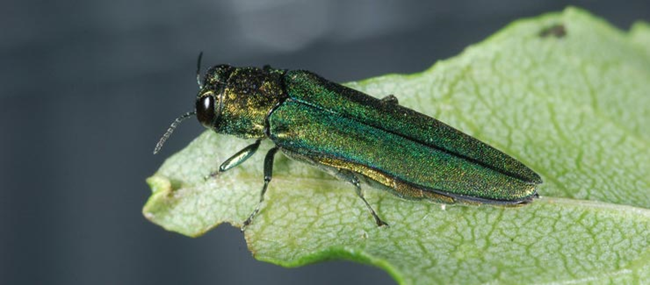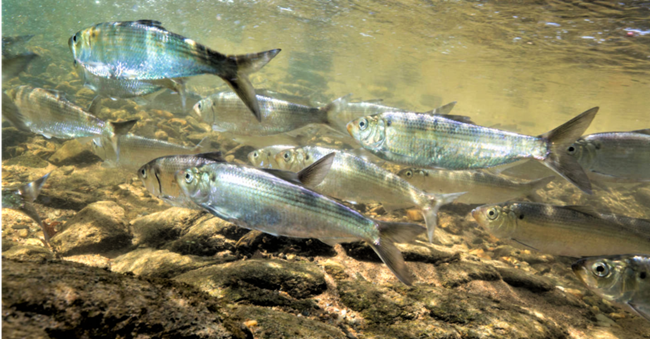What is an invasive species?Invasive species are organisms that move to places where they are not native. They are aggressive and outcompete native species, causing harm to the ecosystem. In their homelands, natural predators limit the populations of these species. Many invasive species hitchhiked on items European settlers brought to North America. Plant seeds hid in bags of grain, ship ballast, and personal belongings. Gardeners, farmers, florists, and pharmacists brought other plants which became invasive, on purpose. Not all non-native species are invasive. Invasive plants tend to have hardy root systems, and some can produce millions of seeds per year. Invasive animals tend to be super adaptable. In their homelands, natural predators limit the populations of these species. North American animals tend not to feed on invasives because they are not used to them. Many people still introduce species noted for their 'hardiness', 'deep spreading roots,' or 'huge' seed crops. Below are several "successful" invasive species in the Lakeshore that are damaging ecosystems. . Terrestrial Plants
NPS Photo Baby’s Breath (Gypsophila paniculata)Florists brought baby’s breath to North America over a century ago for bouquets. During autumn, a baby’s breath bush breaks off at its base to roll like a tumbleweed. The wind blows them around and they drop seeds over a huge stretch of land. Its large taproot can go down 13 feet, which has allowed it to crowd out native plants like the threatened Pitcher's thistle. 
NPS photo/ M. Adams Spotted Knapweed (Centaurea stoebe)Although spotted knapweed has attractive pink flowers, it is harmful to native plants. The roots of spotted knapweed create an herbicide that prevents other plants from growing nearby. This reduces the habitat available to native plants. These chemicals can also irritate your skin so do not to pick it, or any other plant in the National Lakeshore. 
USDA Photo / M. Garland Autumn Olive (Elaeagnus umbellata)Farmers introduced this shrub to fight soil erosion, but it has spread everywhere. Autumn olive thrives in sensitive areas like grasslands and forest edges. They outcompete native vegetation for water, sunlight, and nutrients. The Lakeshore sometimes brings in goats to graze on invasive plants like autumn olive.
NPS Photo Purple Loosestrife (Lythrum salicaria)Purple loosestrife was brought from Europe to North America for gardening and beekeeping. This plant thrives in wetlands, but it can also be found along the road. A single plant sends up many flower stalks, which can produce over 3 million tiny seeds. Purple loosestrife outcompetes the native plants that animals need for food and shelter.
NPS Photo Garlic Mustard (Allaria petiolata)Europeans introduced garlic mustard for people to eat, but it has spread all over North America. It takes advantage of shady forest floors, creating thick stands that choke out native plants. They have reduced the biodiversity of many forests, and they can be toxic to native animals and insects. The pods of garlic mustard burst when disturbed, which sends their seeds flying. 
NPS Photo Common Burdock (Arctium minus)Many people may be familiar with burdock because its seed dispersal strategy was the inspiration for Velcro. The burred pods of the burdock plant allow its seeds to hitch a ride on animal fur and human clothing. The hooks of burdock seeds are so strong that they can prevent bats and birds from opening their wings once attached.
NPS Photo / D. Newman Black Locust (Robinia pseudoacacia)Farmers introduced black locust trees to the Upper Midwest for their rot-resistant wood. This tree establishes itself in disturbed areas, such as our rugged dune ecosystem. They multiply by sending up suckers from their roots or casting seeds everywhere. This can create dense stands that block the sunlight from reaching native plants on the ground. 
USGS Photo / I. Pfingsten Eurasian Watermilfoil (Myriophyllum spicatum)Eurasian watermilfoil grows in dense mats underwater. They outcompete native vegetation for oxygen, nutrients, and sunlight. They also disrupt the aquatic food web by tangling large fish and blocking their upstream movement. Mats of this plant can be so thick that even canoes and kayaks cannot get through them. 
USFWS Photo / R. Hagerty Hydrilla (Hydrilla verticillate)Hydrilla was introduced through the aquarium trade in the 1950s, and it has spread nationwide. It has become one of the most damaging aquatic invasive species. This small plant is highly adaptable, and it can reproduce in many ways to colonize new areas. Hydrilla grows in large mats that choke out native plants and animals, which creates ecological dead zones. Terrestrial Animals
NPS Photo Mute Swans (Cygnus olor)The elegant mute swan was introduced to North America to beautify city parks and country estates on the east coast. Over a century later, they are terrorizing wetlands nationwide. These large territorial birds are aggressive to native waterfowl, and they outcompete them for food. Mute swans have been known to attack people and pets that get too close to their nests. 
NPS Photo White-Tailed Deer (Odocoileus virginianus) *While native to the mainland, white-tailed deer were not historically found on the Manitou Islands. They were introduced to North Manitou in the 1920s for sport hunting. These invasive deer increase the browsing pressure on native vegetation. This caused the forest ecosystems on the island to collapse. Their populations are now managed through an annual hunting lottery. Insects
NPS Photo Hemlock Wooly Adelgid (Adelges sugae)The Hemlock Wooly Adelgid (HWA) is a small insect that feeds on the nutrients in hemlock trees. They cause the tree to lose its needles and stop growing, which can destroy whole forests in a matter of years. The egg sacs of HWA have a protective coating that looks like a puff of cotton on the underside of each hemlock needle. 
USDA Photo Emerald Ash Borer (Agrilus planipennis)The infamous emerald ash borer (EAB) is a small green beetle that feeds on ash trees. They prevent nutrients from circulating up and down the tree, which can kill a mature ash after a few years. Their infestations have decimated many ash tree populations across eastern North America. EAB have spread across the country through infested firewood. Aquatic Animals
USGS Photo / M. Richerson Quagga Mussels (Dreissena bugensis)Quagga mussels are now a much larger problem in Lake Michigan than zebra mussels. Quagga mussels can live in deeper water, and they do not need a hard surface to latch onto. This allowed them to carpet much of the lakebed. They filter food out of the water that native species depend on. They also aid in the spread of avian botulism, which kills shorebirds. 
USFWS Photo Sea Lamprey (Petromyzon marinus)The long, slimy sea lamprey invaded the Great Lakes from the Atlantic Ocean around a century ago. They attach to large fish with their suction-cup mouth and rasp away at their flesh, often leaving fatal wounds. Sea lamprey destroyed the populations of large predatory fish in Lake Michigan. This left an opening for other species to invade, like alewives and gobies. 
USFWS Photo Alewife (Alosa pseudoharengus)Alewives are a small silver fish from the Atlantic Ocean. When they invaded the Great Lakes they found a place with few predators, so their populations exploded. They have big appetites and leave little food for native fish. Alewives experience seasonal die-offs where they wash ashore in the millions. Pacific salmon were introduced in Lake Michigan to control their population. 
USFWS Photo Round Goby (Neogobius melanostomus)The aggressive round goby outcompetes native fish for food, shelter, and nesting sites. This has greatly reduced bottom-dwelling fish populations. While they do feed on invasive mussels and they can be eaten by native predators, they also move environmental toxins up the food chain. This has led predators like fish and birds to die from accumulated poisons. |
Last updated: September 20, 2025
